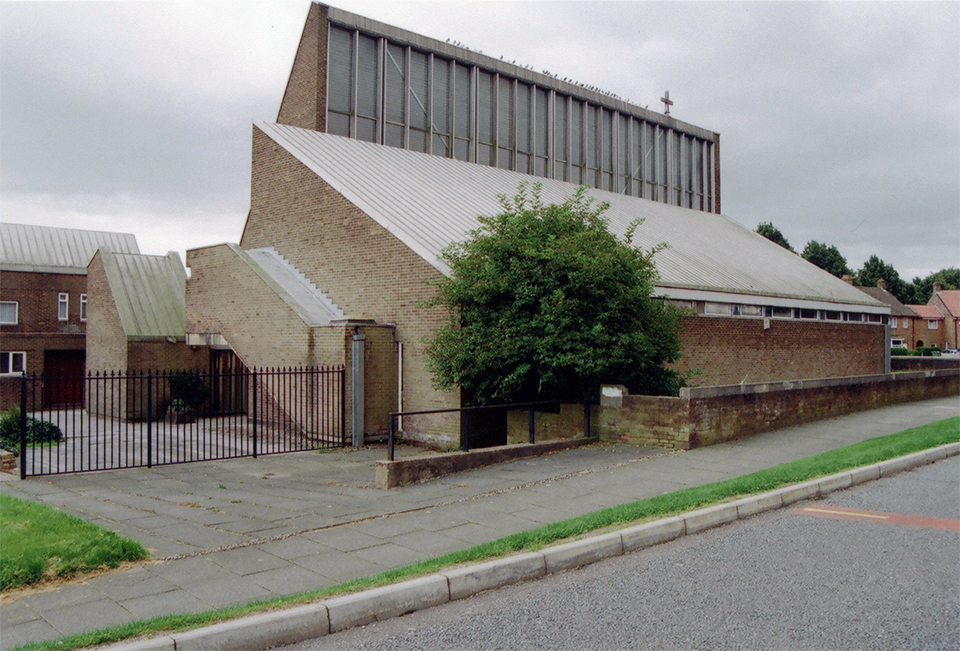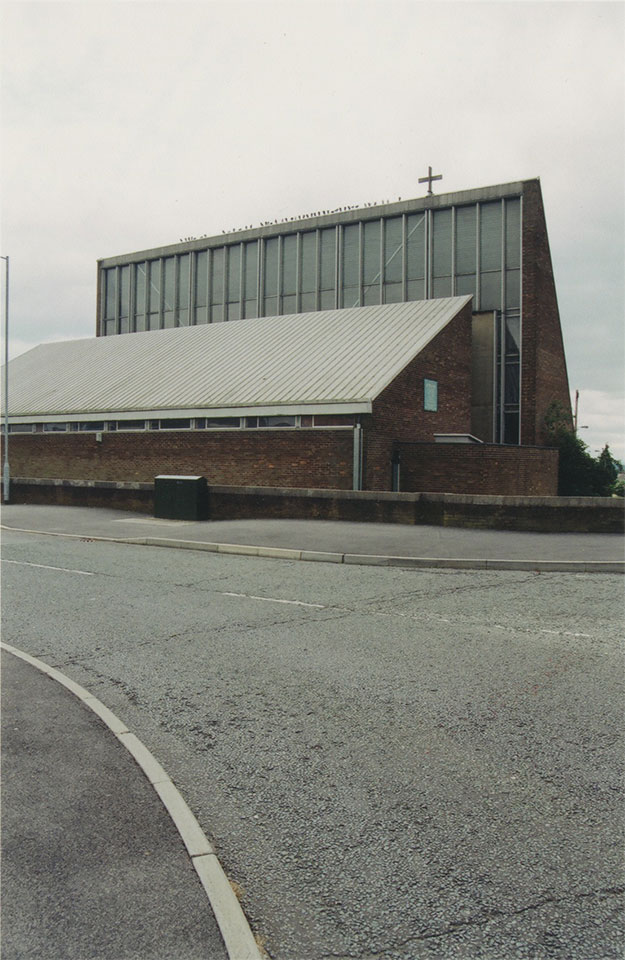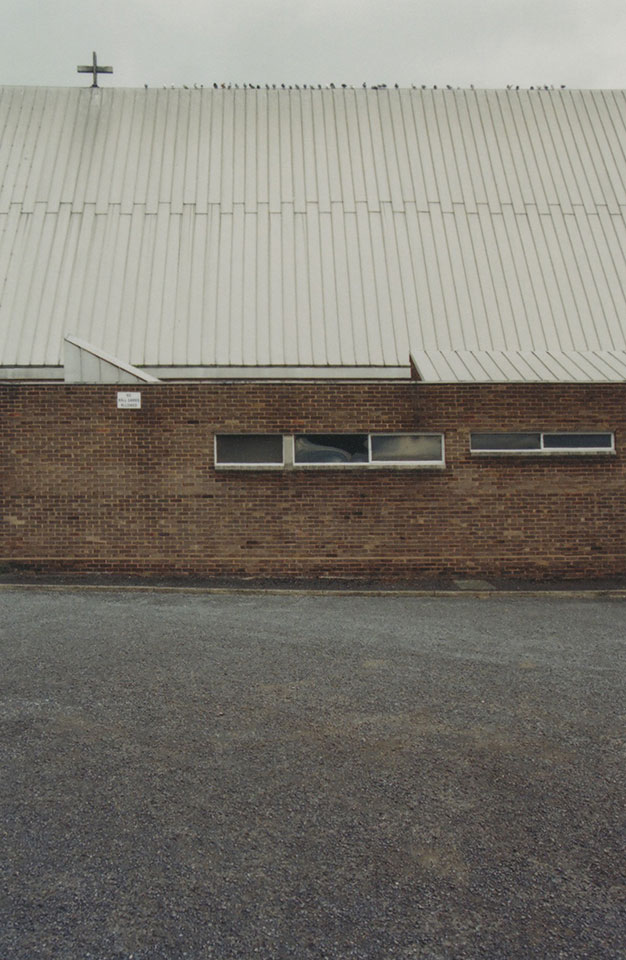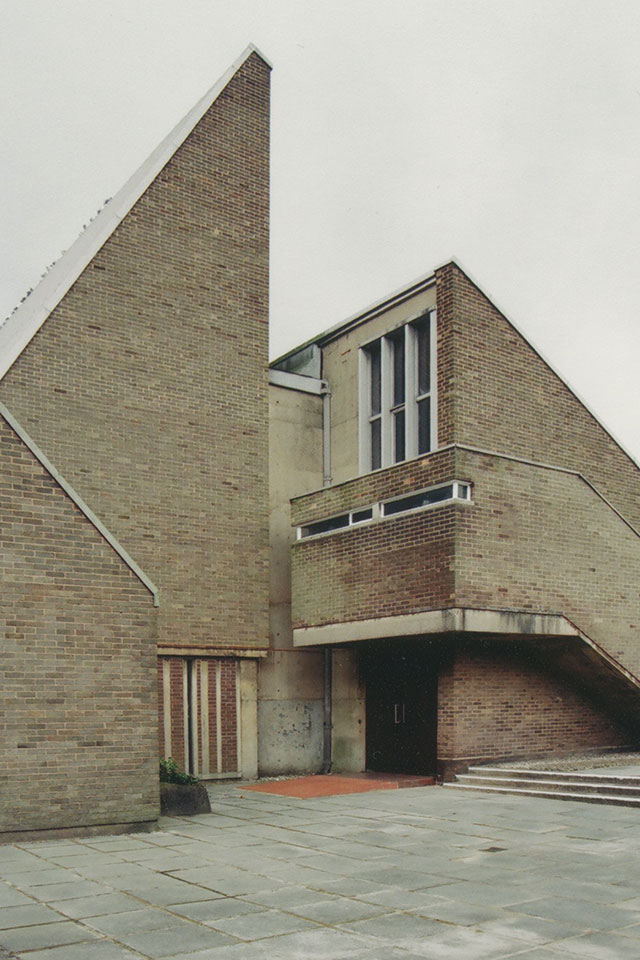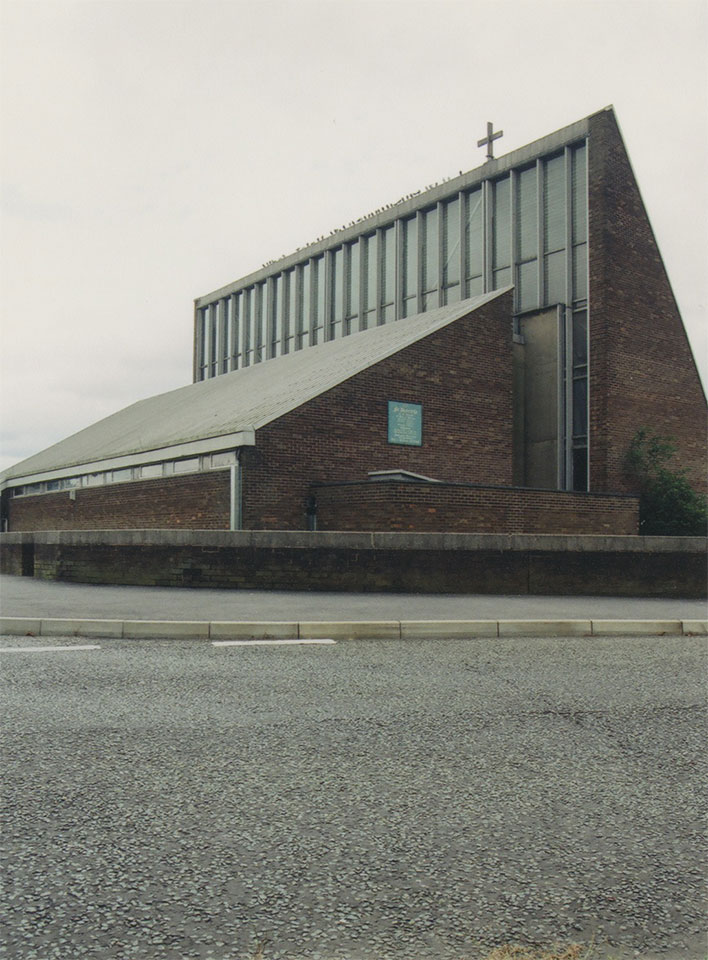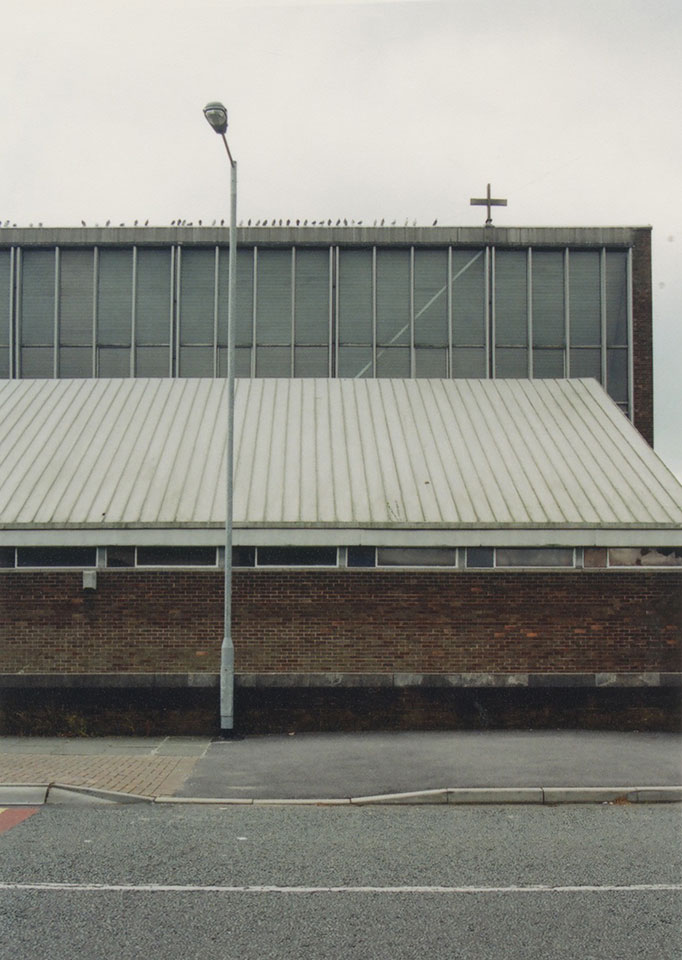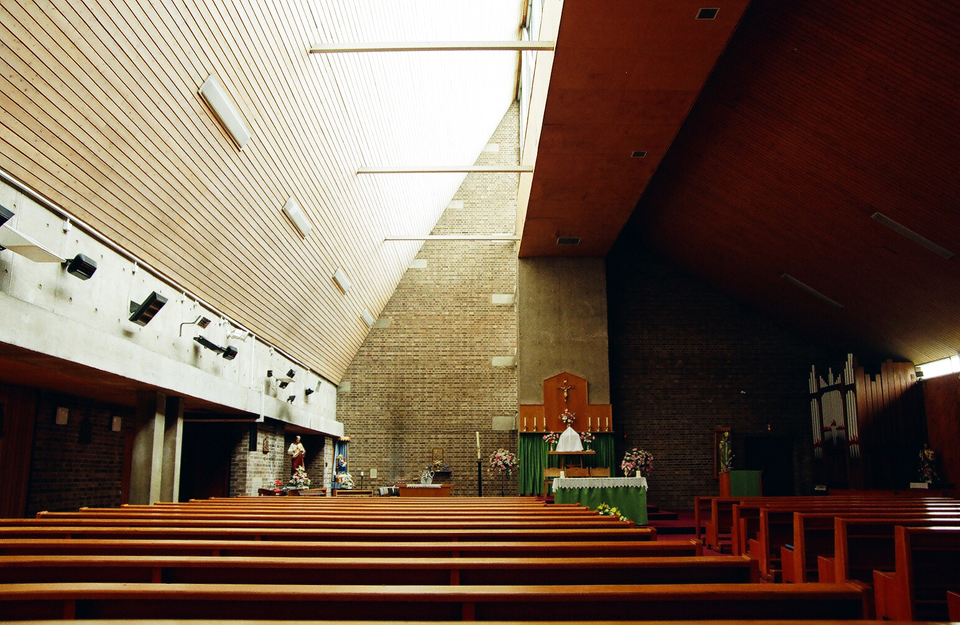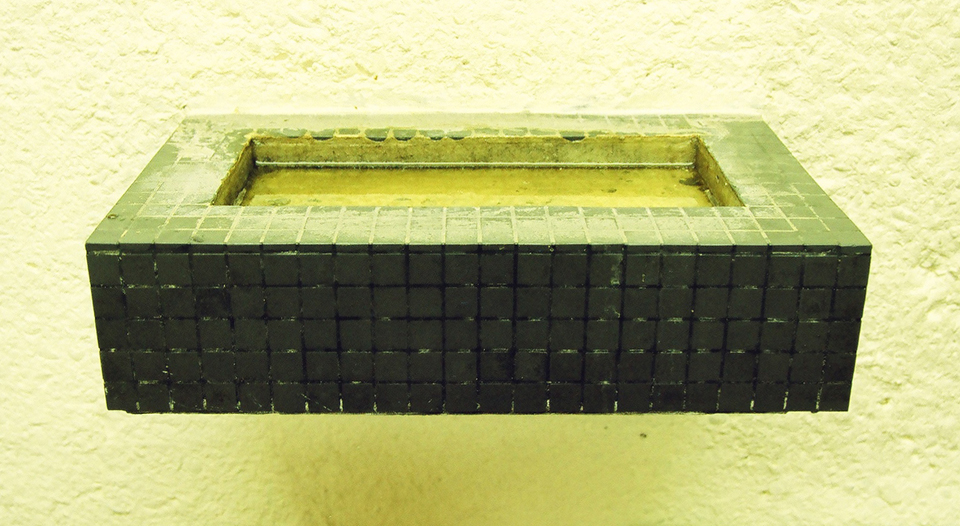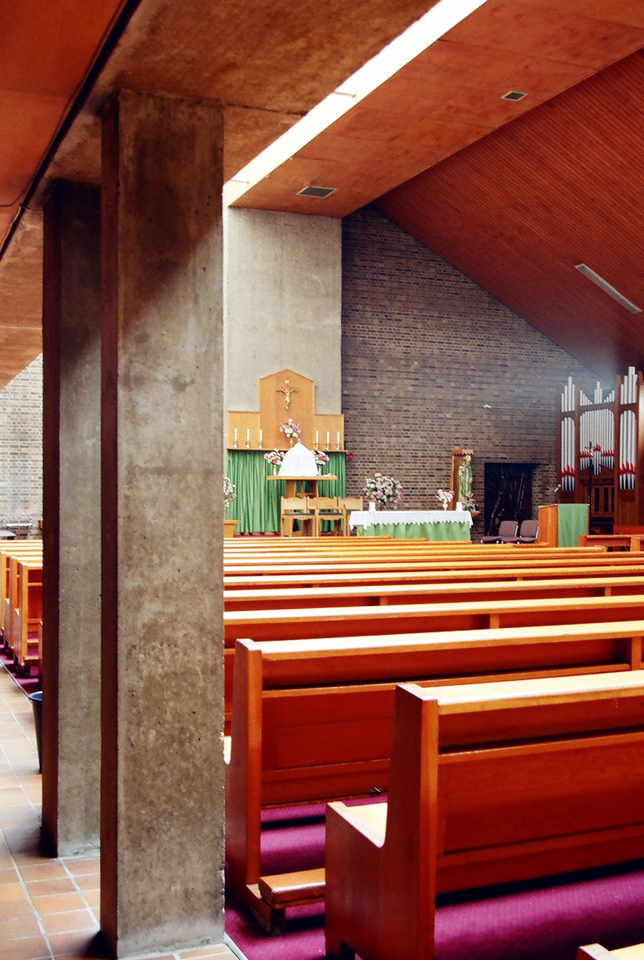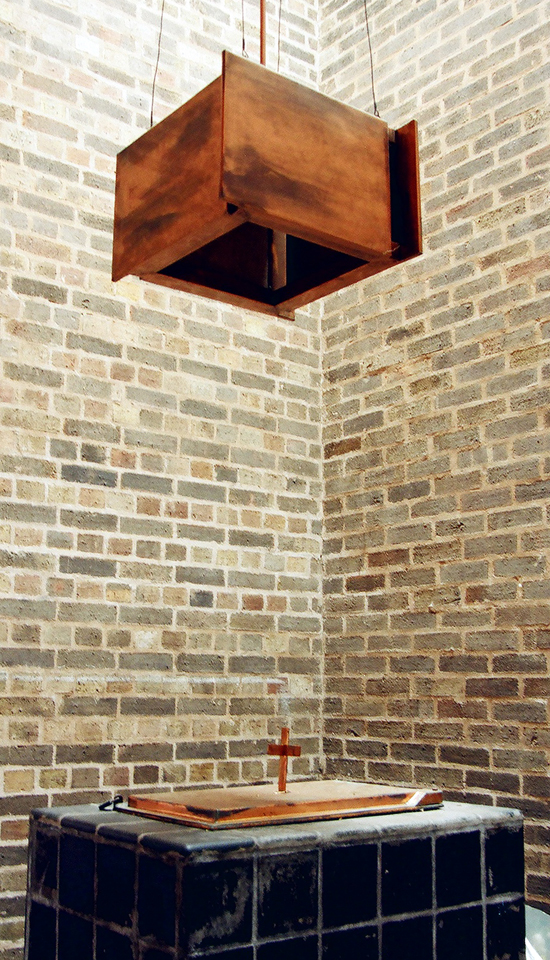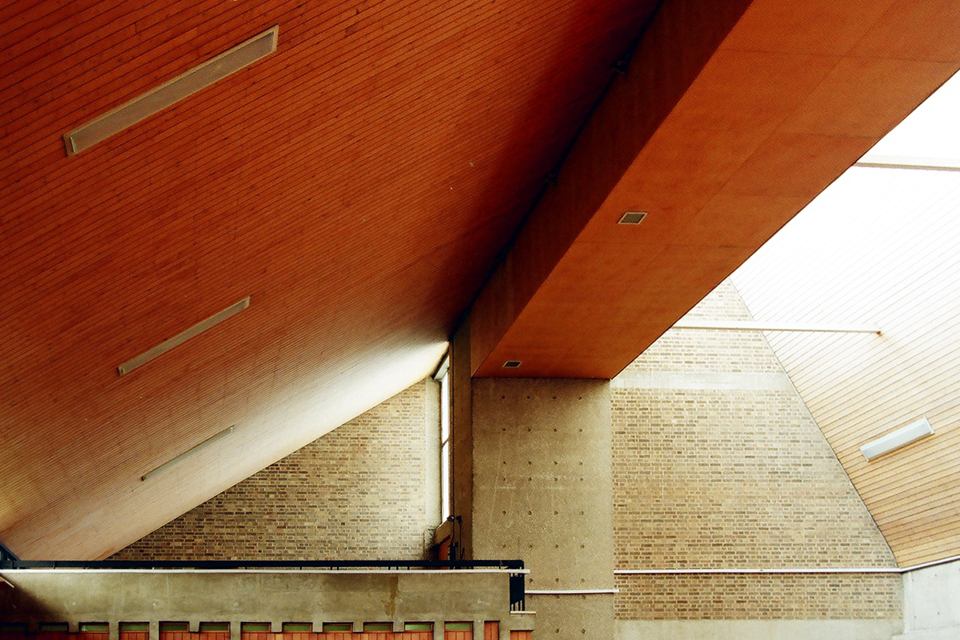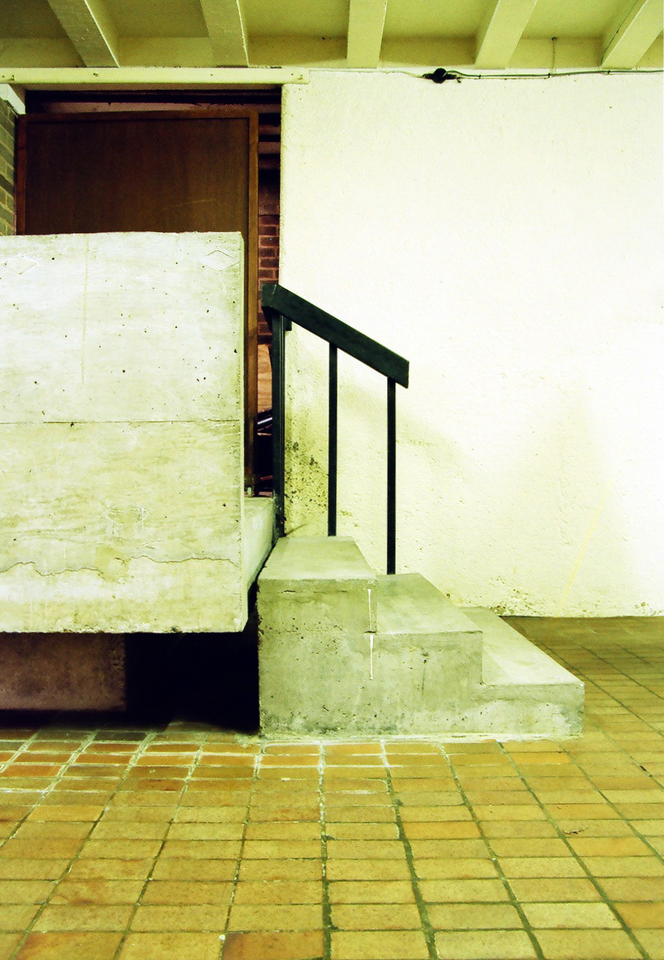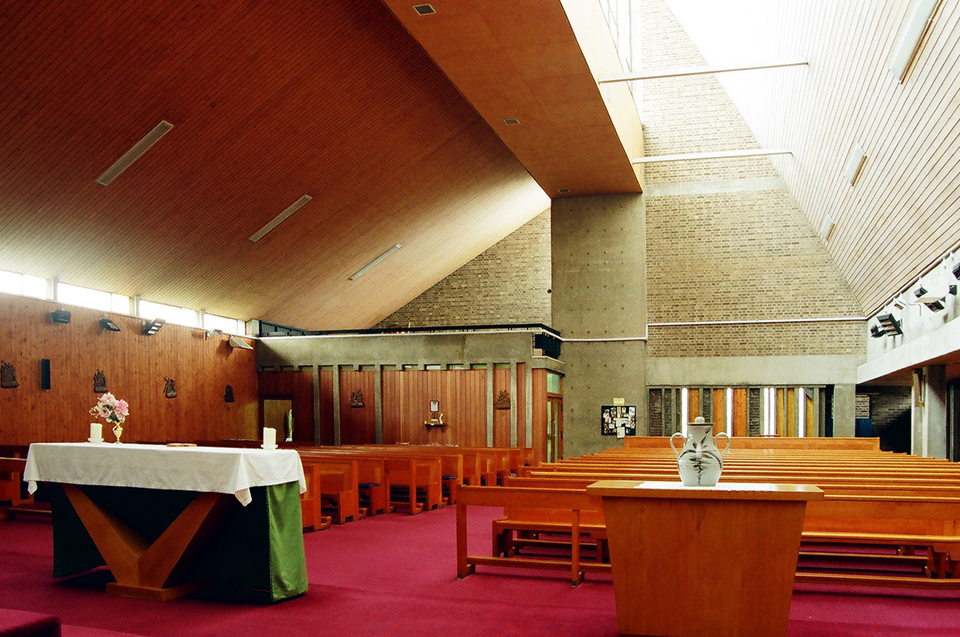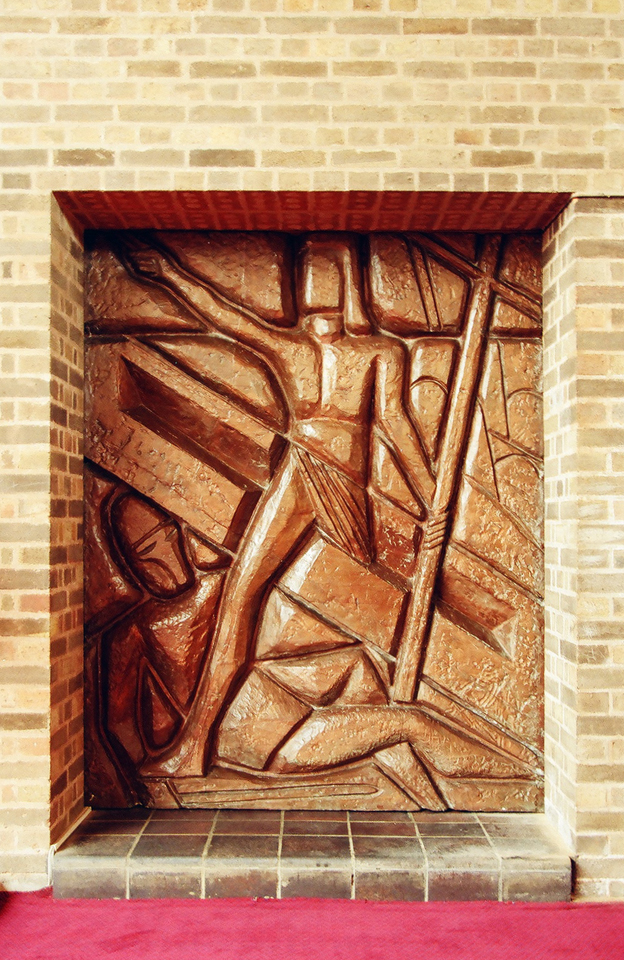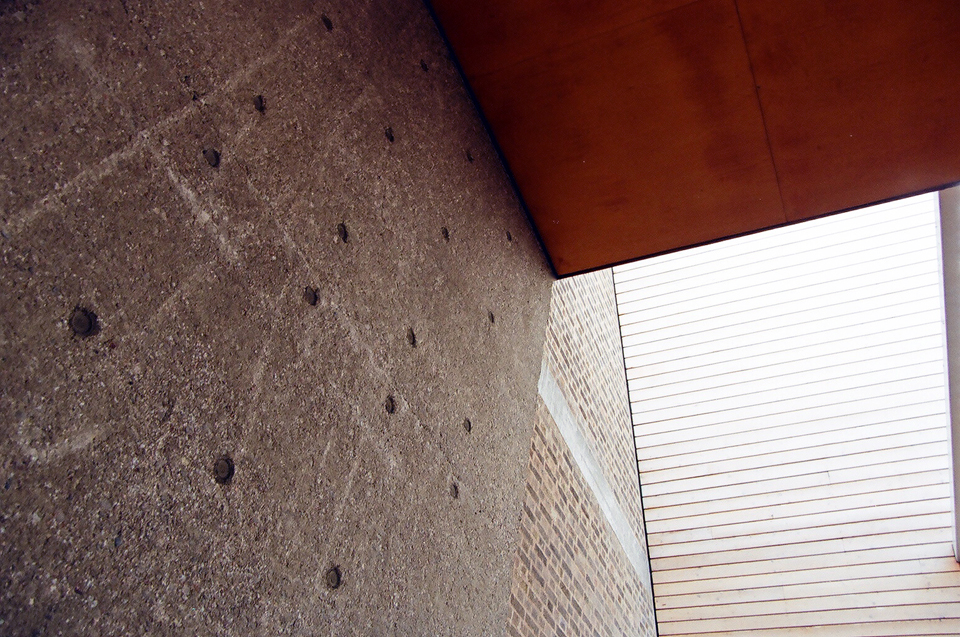St. Patrick's Church
1965
The project architect for this church, Richard O'Mahony, was responsible for a significant number of others across the region. O'Mahony and F.X. Velardes son, Julian, continued the practice after Velardes death in 1960. O'Mahony's practice was the eventual successor from Velardes firm. This beautifully stark and machined building has a simple form of twin monopitched volumes that form the nave and chancel. The simplicity of the mass viewed from the road, gently unfolds into a neat, but more complex set of interlocking forms in a courtyard enclosed by the adjacent presbytery. A clever manipulation of the stair and baptistry forms a cupped space and a soffit to enclose the visitor on approach to the threshold. The interior is as hard as the outside and deploys quarry tiles, unfinished concrete, exposed brickwork and pine boarding as the primary materials. Robert Proctor suggests that this cheap and simple approach may have been informed by the church’s position amidst a local authority housing estate and on the edge of an industrial town [1]. There were similar uses of common materials in churches by Gillespie Kidd Coia and Maguire & Murray. Proctor also makes a case for am ‘ethical dimension’ to such treatment and notes that O’Mahony had visited Sigurd Lewerentz’s churches in Sweden. The controlled light and the material palette offer a monastic sense to the interior and one that is particularly focused on the sacramental spaces. The baptistry has a particular treatment wherein the font is a piece of the building, rather than a piece of furniture – it too is faced with quarry tiles and a subtle application of copper to the lid and overhanging canopy. The whole building belies its simplicity and the whole composition is markedly more than the sum of its parts.
[1] Proctor, R. (2016) Building the Modern Church: Roman Catholic Architecture in Britain, 1955 to 1975 (London: Routledge) p.92.
